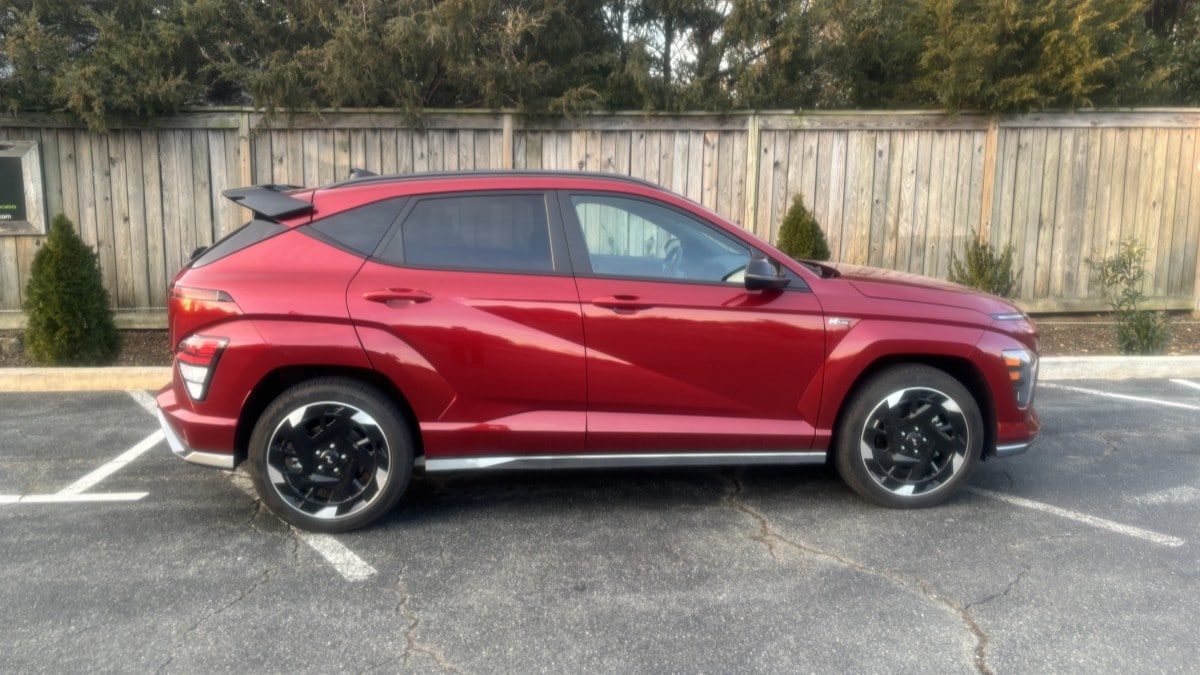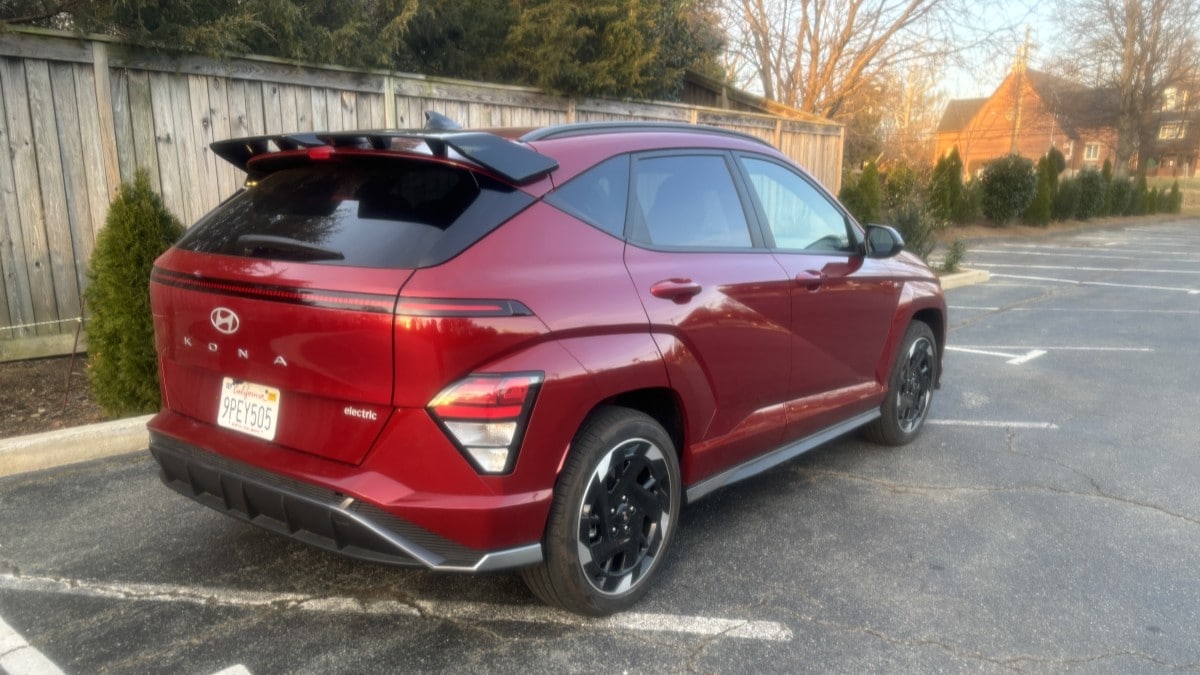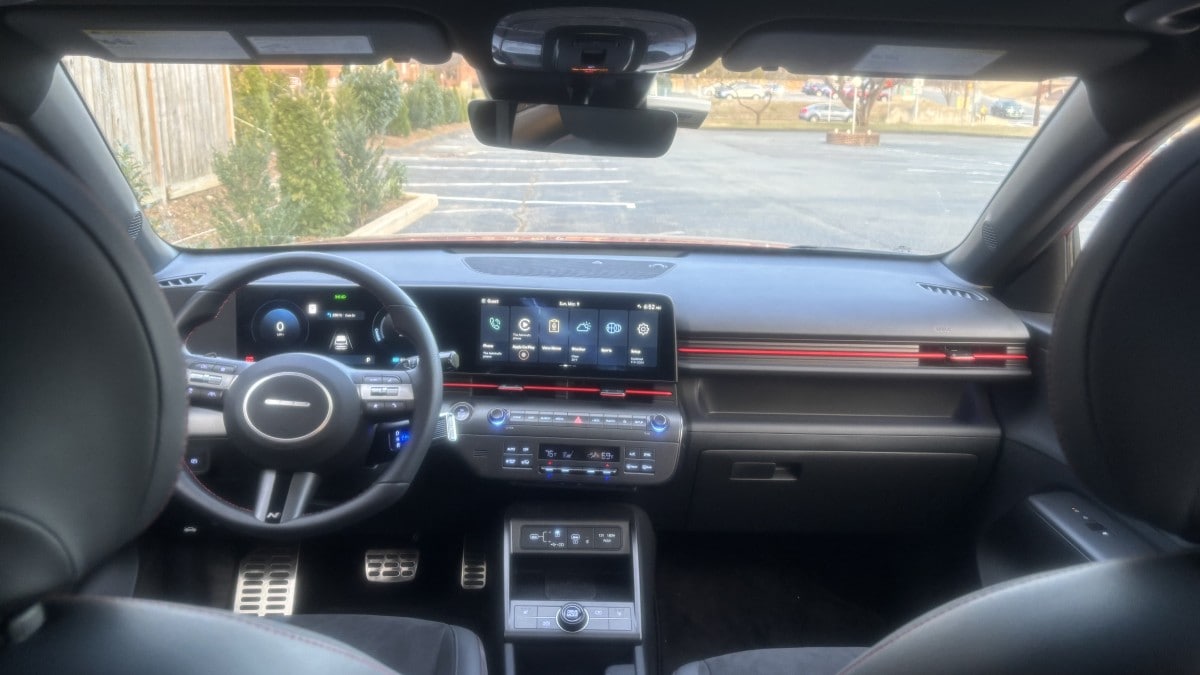Have electric cars become mainstream? Perhaps not. Kelley Blue Book parent company Cox Automotive projects that electric vehicles (EVs) may become 10% of all new cars sold in America in 2025. The average car on American roads is now pushing 13 years old. It will take decades before most of the vehicles around you in traffic are electric.
On the other hand, maybe EVs have gone mainstream. Already, you can be next to one at a stoplight and have no idea. There are pleasant, practical, easy-to-live-with electric cars that can slide completely under the radar.
Case in point: the 2025 Hyundai Kona Electric.
Hyundai builds the Kona as a gas-powered compact SUV or an electric one for the United States, while it also sells a hybrid version overseas. It’s an automotive multitool, if a pocket-sized one. The gas-powered Kona won our Best Buy Award in the subcompact SUV class for 2025.
The electric version shuttled me around the suburbs and downtown Washington, D.C., for a week. It was remarkable for how unremarkable it was. In every version of the Kona, as our award notice says, “the finished product is greater than the sum of its many qualities.”
How does the electric one differ? It gets away from a stoplight a little quicker, and I plugged it into a wall to refuel it rather than stopping at a gas station.
My tester Kona was the N Line, Hyundai’s term for a sporty-looking model. Hyundai N cars are actual high-performance cars, and N Line models just dress like them.
It came in Ultimate Red Metallic with a black interior (the only option) and no additional options or packages. Its retail price was $40,325, counting $500 for the red paint and $1,450 for delivery.
The Kona Electric is not eligible for the federal government’s $7,500 EV tax rebate, which is one of its very few flaws. Hyundai builds it in South Korea, so it could eventually be exposed to tariff-related price increases. But Hyundai has pledged not to raise prices until June at the earliest.


Easy to Love in Urban/Suburban Driving
The Kona Electric comes in two power levels. The base model SE pulls on tap just 133 horsepower. All other trim levels, including the N Line that Hyundai loaned me to test, have 201 hp. In every case, that power goes only to the front wheels.
All-wheel drive (AWD) might be nice if you live in the snowbelt. Hyundai doesn’t offer it. But front-wheel drive (FWD) works well for most of us, and snow tires would likely make this grippy enough for any driving circumstance you’re likely to take a compact crossover into.
The base SE has 200 miles of range, and the N Line gets just 230 miles between charges. Even the longest-range Kona models get just 261. Surveys show that most Americans want at least 300, so that will be a limitation for some. But, in truth, most of us rarely drive more than 230 miles in a stretch. If you do, this isn’t the car for you.
Handling is crisp, with relatively light steering effort. Braking is unexceptional and confident. Electric cars tend to accelerate quickly. The Kona Electric is not a performance car, but it packs a satisfying power punch if you need to pass on the highway.
SUV or Hatchback? Either Way, It Has Usable Space


If you want an electric car that looks distinctive and shouts its EV status, Hyundai has several it can sell you (the Ioniq 5 and Ioniq 6 are among the most unique-looking vehicles on the road).
This isn’t one of them. The Kona Electric is a stealth EV. That’s true, of course, because there’s a gas-powered version. But even if there weren’t, a sharp diagonal cutline in the doors and faceted styling make this look something like an Elantra crossover.
It wasn’t designed to look sporty, but twin spoilers do a surprising amount to make it look like it knows what it’s doing. I’m generally anti-spoiler, but this one helps the design.
Hyundai sells it as an SUV. With just 5.9 inches of ground clearance and a front-wheel-drive configuration, it’s not an off-roader. It’s more like a tall hatchback.
The cabin is roomy and functional. A pair of 12.3-inch screens mounted like one wide screen gives it a high-tech look. But Hyundai also gives you a button for most vital functions, so you’re not stuck paging through screen menus to adjust the temperature or turn up the volume.
The N Line gets red stitching on black leatherette and Alcantara faux-suede seats. It’s a sporty touch that doesn’t look juvenile.
With the rear seats in place, the Kona Electric offers 25.5 cubic feet of cargo space. That’s not unusual for the subcompact SUV class. But with the rear seats folded, capacity jumps to 63.7. That’s competitive with larger compact SUVs.
10 Years of Peace of Mind


All that, and the Kona Electric’s best feature might still be the piece of paper they hand you when you buy one. It carries a 10-year/100,000-mile powertrain warranty — nearly double the coverage of most subcompact SUVs.
With the economy as unpredictable as it’s been in recent years, a decade of predictable transportation expenses (and never paying for gas) might be its best feature.
I’d be satisfied with the 2025 Hyundai Kona Electric if it were a basic commuter car that let you pay electricity prices instead of gas prices when you drive. But it’s more than that, with a dash of style, the cargo space of a larger car, and a bit of electric zip when you need it.
A range under 300 miles is a limitation for some. But if you rarely take major road trips or need a second car, it’s hard to beat the predictability and easy-to-like nature of Hyundai’s stealth EV.

